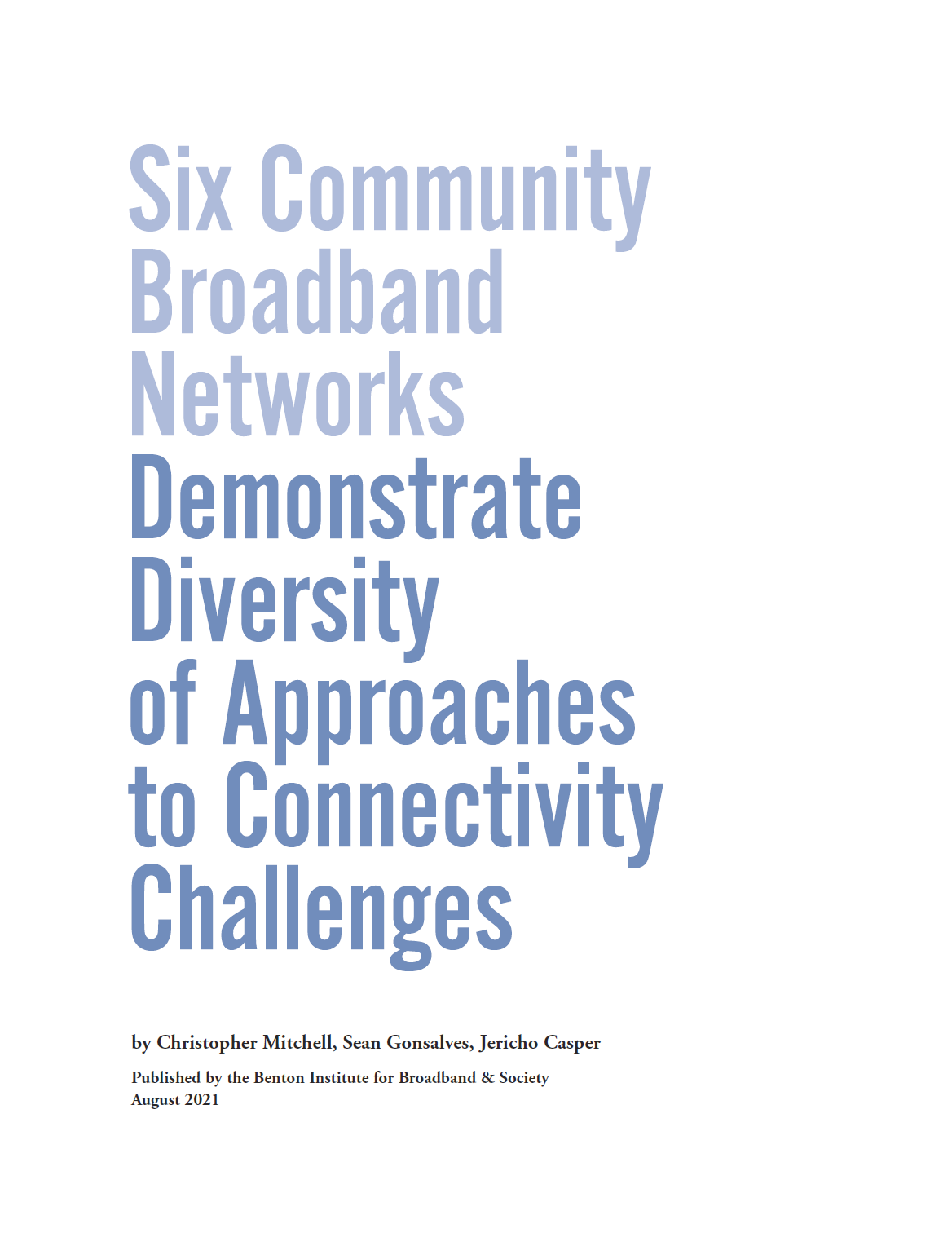Sean Gonsalves
Springfield Explores Municipal Broadband
Springfield (MA) took its first step to explore whether it will become the first of New England’s five biggest cities to build a municipal fiber-to-the-home network. City officials are in the process of issuing a Request for Proposals to conduct a feasibility study to explore if Springfield will control its digital future by meeting “the growing demand for reliable and affor
Two South Carolina Cooperatives Bring Broadband to Blue Ridge
Two utility cooperatives in South Carolina – one electric, the other a telephone co-op – have teamed up and are now cooperating to bring fiber-to-the-home Internet service to members living in Anderson, Greenville, Oconee, Pickens, and Spartanburg counties. The Blue Ridge Electric Cooperative (BREC) partnered with WCFIBER, a subsidiary of the West Carolina Telephone Cooperative.
One might think this is the moment for community broadband networks. The truth is, locally-directed networks have been serving their communities for a long, long time.


The Problem(s) of Broadband in America
A common misunderstanding of exactly where the digital divide is located has led to faulty assumptions about where investments need to be made, as if broadband access is a challenge confined primarily in rural America. The actual shape of the problem is different than many elected officials realize; a lack of fast, reliable, and affordable broadband is also a major problem in urban and suburban America. America’s connectivity crisis—created by uncompetitive market conditions—is actually a three-fold challenge: access, affordability and adoption.
A Promising Model for Expanding Internet Access in Rural Vermont
Internet connectivity in Vermont’s Northeast Kingdom is downright medieval by modern telecommunication standards. With the exception of a handful of homes in more densely populated communities, the only choice for most folks living in the rural environs of the Northeast Kingdom is between DSL and satellite. That’s all changing now thanks to one of the state’s nascent Communication Union Districts (CUD), enabled by a 2015 Vermont law that allows two or more towns to join together as a municipal entity to build communication infrastructure.

President Biden Proposes Government Actually Try to Create Broadband Competition
Most Republicans and many Democrats have framed broadband much like Ronald Reagan would: Get government out of the way, remove regulations, and let too-big-to-fail incumbent providers bridge the digital divide. A favorite target is public rights-of-way—every street plus about ten feet of land on each side where utility poles or underground utility lines are located, and where internet service providers attach or bury lines and equipment that transmit internet data.
Outside Gettysburg, a Battle for Better Broadband
In the borough of New Oxford (PA), ten miles east of the county seat (Gettysburg), the non-profit media group Community Media of South Central Pennsylvania is leading the charge to bring Fiber-to-the-Home (FTTH) victory for the approximately 102,000 residents spread out across the rural county’s 520 square miles. But with restrictive state laws that protect incumbent providers from competition by not allowing municipalities to provide broadband service, and scarce funding for non-governmental entities to build broadband infrastructure, victory is far from certain. About 10 years ago a coun

Why 25/3 Broadband Is Not Sufficient
In August 2020, the Federal Communications Commission proposed to retain its current benchmark for broadband internet access service: 25 Megabits per second (Mbps) download and 3 Mbps upload. Areas believed to have 25/3 service already do not qualify for most broadband subsidy programs, though most agree that the FCC has poor data on whether that level of service definitively exists in any given region.
Chicago Connected Tackles “Startling Gaps in Internet Connectivity” for City Students
Over the summer, Chicago Mayor Lori Lightfoot announced a new program to bring high-speed Internet service to the alarming number of households who do not have reliable access within the nation’s third-largest school district, called Chicago Connected. The program aims to provide free high-speed Internet service to approximately 100,000 Chicago Public Schools students. At the end of Sept, during a virtual town hall meeting, Mayor Lightfoot said that while CPS was making progress connecting eligible families, they had not yet reached the goal. “We’re not where we want it to be.

